
Spokane Valley is a city in Spokane County, Washington, United States, and the largest suburb of Spokane. It is located east of Spokane, west of Coeur d'Alene, Idaho and surrounds the city of Millwood on three sides. The city incorporated as the City of Spokane Valley on March 31, 2003. The Washington State Office of Financial Management estimates the city's population as 101,060 as of 2019. Spokane Valley is named after the valley of the Spokane River, in which it is located. Before becoming an incorporated city, the area was and still is referred to as "The Valley" by residents of the Spokane–Coeur d'Alene area.

Montezuma Castle National Monument protects a set of well-preserved dwellings located in Camp Verde, Arizona, which were built and used by the Sinagua people, a pre-Columbian culture closely related to the Hohokam and other indigenous peoples of the southwestern United States, between approximately 1100 and 1425 AD. The main structure comprises five stories and about 45 to 60 rooms and was built over the course of three centuries.
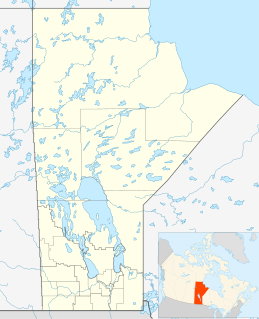
Birtle is an unincorporated urban community in the Prairie View Municipality within the Canadian province of Manitoba that held town status prior to January 1, 2015. It is located at the junction of Highways 83 and 42.

A visitor center or centre, visitor information center, tourist information center, is a physical location that provides tourist information to visitors.
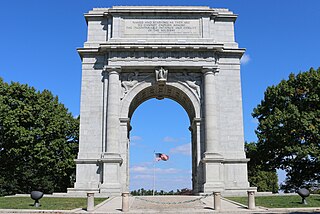
Valley Forge National Historical Park is the site of the third winter encampment of the Continental Army during the American Revolutionary War, taking place from December 19, 1777 to June 19, 1778. The National Park Service preserves the site and interprets the history of the Valley Forge encampment. Originally Valley Forge State Park, it became a national historical park in 1976. The park contains historical buildings, recreated encampment structures, memorials, museums, and recreation facilities.

Cultural heritage tourism is a branch of tourism oriented towards the cultural heritage of the location where tourism is occurring.

The Oregon State Capitol Foundation is a 501(c)(3) nonprofit organization.

The Delaware & Lehigh Canal National and State Heritage Corridor (D&L) is a 165-mile (266 km) National Heritage Area in eastern Pennsylvania in the United States. It stretches from north to south, across five counties and over one hundred municipalities. It follows the historic routes of the Lehigh and Susquehanna Railroad, Lehigh Valley Railroad, the Lehigh Navigation, Lehigh Canal, and the Delaware Canal, from Bristol to Wilkes-Barre in the northeastern part of the state. The backbone of the Corridor is the 165-mile (266 km) D & L Trail. The Corridor's mission is to preserve heritage and conserve green space for public use in Bucks, Northampton, Lehigh, Carbon, and Luzerne counties in Pennsylvania. It also operates Hugh Moore Historical Park & Museums, which includes the National Canal Museum.

The Idaho State Historical Society (ISHS) is a historical society located in the U.S. state of Idaho that preserves and promotes the state's cultural heritage.
Historic preservation in New York is activity undertaken to conserve forests, buildings, ships, sacred Indian burial grounds, water purity and other objects of cultural importance in New York in ways that allow them to communicate meaningfully about past practices, events, and people. Governmental programs for historic preservation range from Federal ownership and active operation of sites to grants and subsidies provided by state government, municipal support of museums and interpretative displays. Nonprofit programs include activities of statewide and local historical associations and museums, and activities of historical societies and museums at the national level. Quasi-governmental organizations, such as the New York State Thruway Authority and Thousand Islands Bridge Authority, play a role as well. Private endeavors, such as investment and other choices made by private landowners to conserve historical features of their properties, are significant but less visible and include groups such as the Historic Districts Council, The New York Landmarks Conservancy and the Preservation League of New York State. During the reconstruction of the World Trade Center site in July 2010, a team of archaeologists discovered a 32-foot-long boat. The craft was at least 200 years old, dating from a time when the Hudson River was partly filled with trash and debris because of a rapidly expanding lower Manhattan.
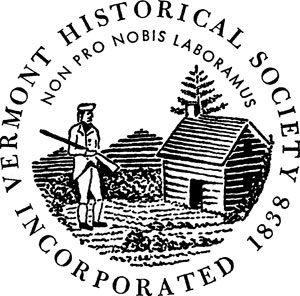
The Vermont Historical Society (VHS) was founded in 1838 to preserve and record the cultural history of the US state of Vermont. Headquartered in the old Spaulding School Building in Barre, the Vermont History Center is home to the Vermont Historical Society's administrative offices, the Leahy Library and a small book shop. In Montpelier the Society operates the Vermont History Museum in the Pavilion building, just east of the Vermont State House.
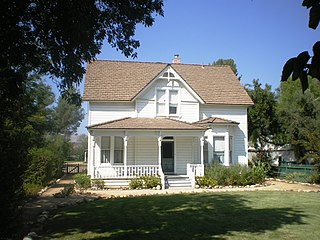
The historic Simi Adobe–Strathearn House served as the headquarters of Rancho Simi, also known as Rancho San José de Nuestra Senora de Altagracia y Simi, one of the land grants in Alta California by the Spanish government. The name derives from Shimiji, the name of the Chumash village here before the Spanish. Rancho Simi was the earliest Spanish colonial land grant within Ventura and Santa Barbara Counties. At 113,000 acres, Rancho Simi was one of the state's largest land grants.

The Autrey Mill Nature Preserve & Heritage Center is located in Johns Creek, Georgia, U.S.A.
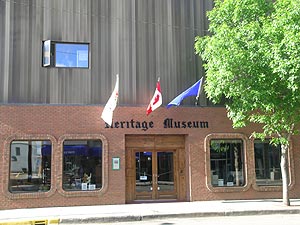
The Wetaskiwin and District Heritage Museum, in Wetaskiwin, Alberta, Canada celebrates the history, heritage, and culture of Wetaskiwin and area. The museum serves the public by documenting and telling the stories of their local community, which includes the City of Wetaskiwin, County of Wetaskiwin, and the Maskwacis Cree Four Nations of Ermineskin, Louis Bull, Montana, and Samson.

The Trail of the Ancients is a National Scenic Byway located in the states of Colorado and Utah. The route highlights the archaeological and cultural history of southwestern Native American peoples, and traverses the widely diverse geological landscape of the Four Corners region of the Colorado Plateau. It was the first National Scenic Byway that was designated solely for its archaeological sites. The entire route is approximately 480 miles (772.5 km) long.
The Ravalli County Museum in Hamilton, Montana, is operated by the Bitter Root Valley Historical Society (BRVHS) in order to acquire, preserve, and interpret the historical and cultural heritage of the Bitter Root Valley and the inhabitants of Ravalli County, Montana. United States. The Museum is open year-round and features three main focal points: local history, natural history and art.

Pasadena Museum of History is a private, nonprofit museum and research library located in Pasadena, California. It is the only institution dedicated to the history, art and culture of historic Pasadena and the west San Gabriel Valley. Headquartered on the grounds of a century-old Pasadena estate, facilities include the Pasadena Museum History Center, the Fenyes Estate and gardens, a research library and archives, the Curtin House, and the Finnish Folk Art Museum. With public exhibits, tours, lectures, seminars, and workshops, the Pasadena Museum of History promotes an appreciation of history, culture, arts and sciences relevant to Pasadena and adjoining communities.
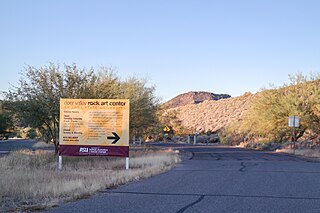
The Deer Valley Petroglyph Preserve, formerly known as the Deer Valley Rock Art Center, is a 47-acre nature preserve featuring over 1500 Hohokam, Patayan, and Archaic petroglyphs visible on 500 basalt boulders in the Deer Valley area of Phoenix, Arizona. In 1980, the US Army Corps of Engineers contracted Simon J. Bruder to conduct an archaeological investigation prior to the construction of the Adobe Dam at the Hedgpeth Hills. The petroglyphs are between 500 and 5,000 years old. The site was listed on the National Register of Historic Places in 1984, and it was also listed with the Phoenix Points of Pride. The preserve and museum are operated by the Arizona State University's School of Human Evolution and Social Change.

The Cliefden Caves ia heritage-listed geoheritage site in Mandurama, Cowra Shire, New South Wales, Australia. The caves comprises Ordovician fossil localities, limestone caves, a spring and tufa dams, and a site where limestone was first discovered in inland Australia.
The NMI Museum of History and Culture, also known as the NMI Museum, is a museum in Garapan, Saipan hosting exhibitions about the Chamorro and Carolinian people and also displays artifacts, documents, textiles, and photographs from the Spanish, German, Japanese, and American periods in the Northern Mariana Islands. The museum has repatriated a significant number of historic objects from the Marianas that were held nationally and internationally in private collections and by foreign museums, companies, and militaries. More than one million dollars has been invested in its collections. The historical buildings on the grounds have been renovated to preserve them, prevent further deterioration, and safeguard visitors. The museum is located across from Sugar King Park.


















